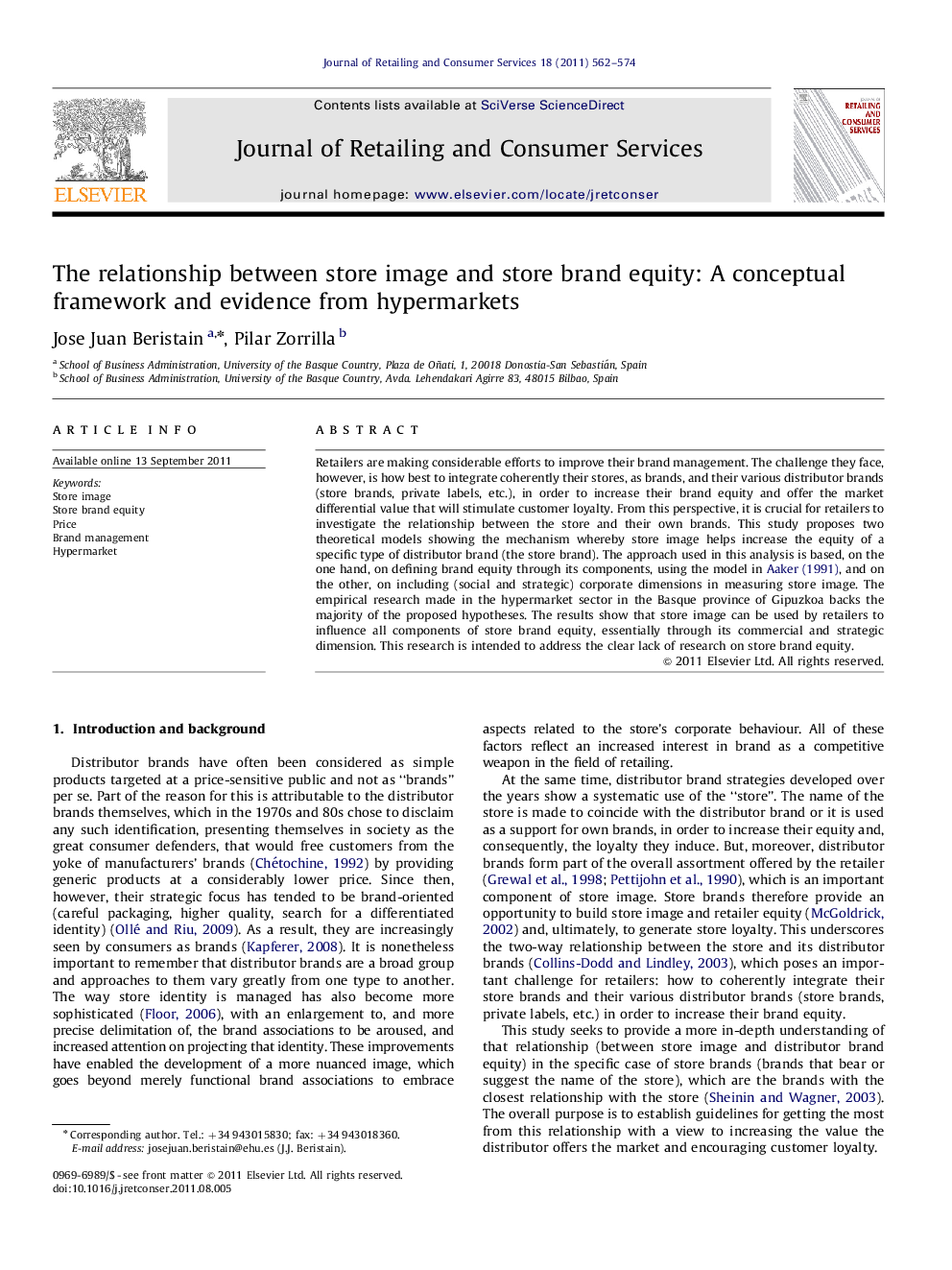| Article ID | Journal | Published Year | Pages | File Type |
|---|---|---|---|---|
| 1029342 | Journal of Retailing and Consumer Services | 2011 | 13 Pages |
Retailers are making considerable efforts to improve their brand management. The challenge they face, however, is how best to integrate coherently their stores, as brands, and their various distributor brands (store brands, private labels, etc.), in order to increase their brand equity and offer the market differential value that will stimulate customer loyalty. From this perspective, it is crucial for retailers to investigate the relationship between the store and their own brands. This study proposes two theoretical models showing the mechanism whereby store image helps increase the equity of a specific type of distributor brand (the store brand). The approach used in this analysis is based, on the one hand, on defining brand equity through its components, using the model in Aaker (1991), and on the other, on including (social and strategic) corporate dimensions in measuring store image. The empirical research made in the hypermarket sector in the Basque province of Gipuzkoa backs the majority of the proposed hypotheses. The results show that store image can be used by retailers to influence all components of store brand equity, essentially through its commercial and strategic dimension. This research is intended to address the clear lack of research on store brand equity.
► We propose a new approach for studying the relationship between store image and store brand equity. ► Store image is positively related to all components of store brand equity. ► There is a positive relationship between the marketing image of the store and store brand equity. ► There is a positive relationship between the strategic image of the store and store brand equity.
